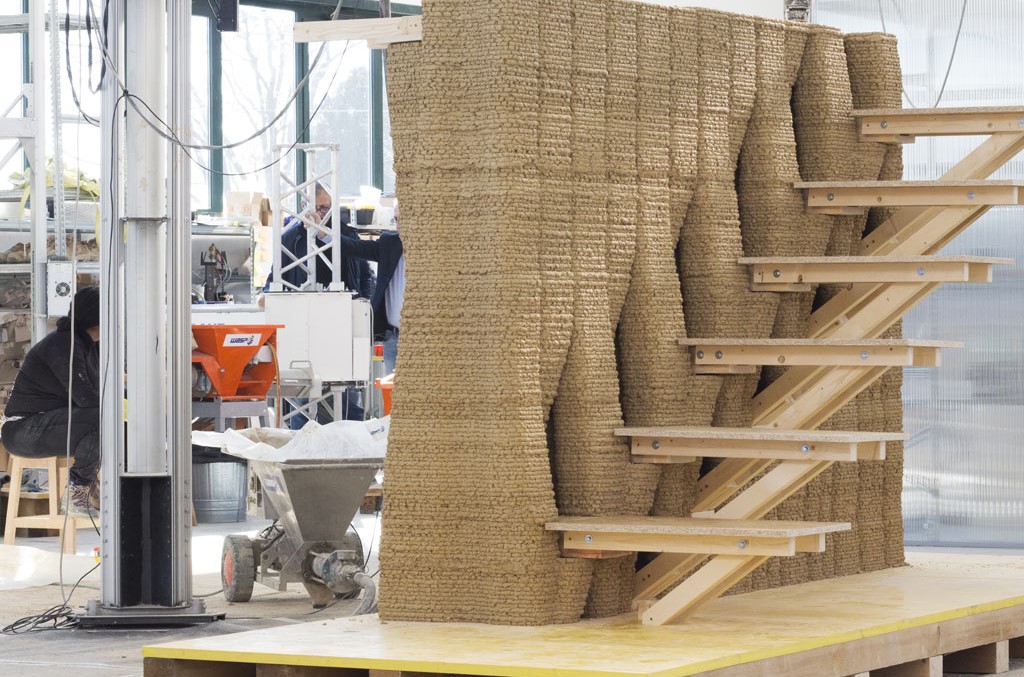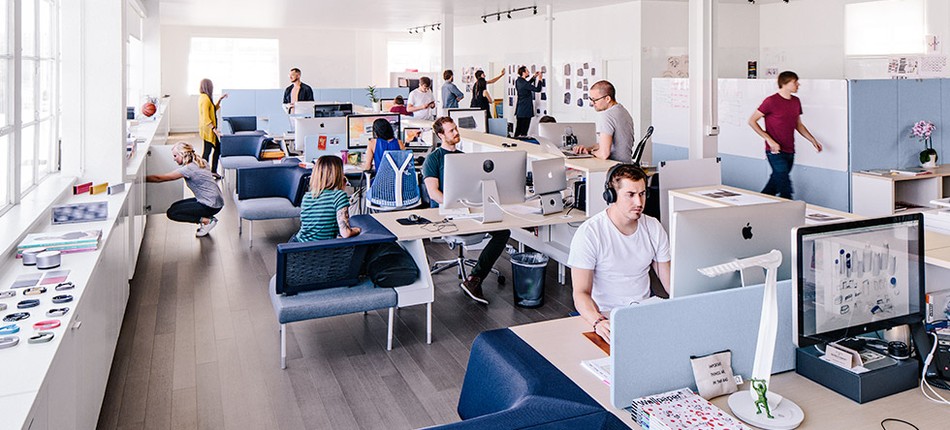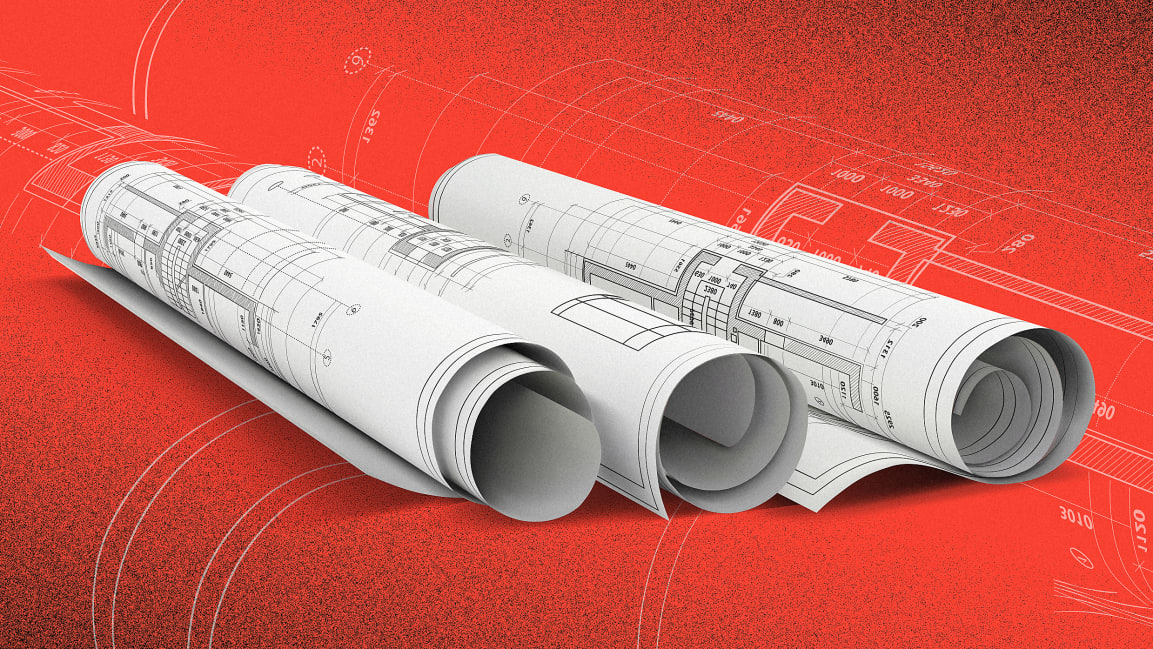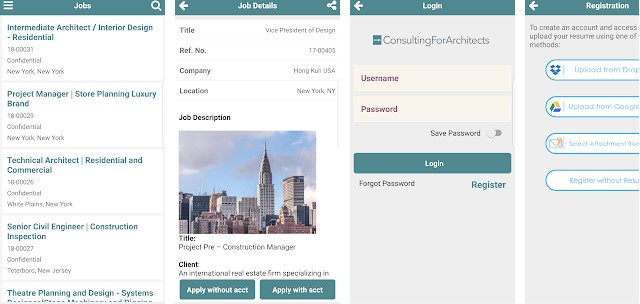Tag archives for: David McFadden

3D printing is revolutionizing the field of architecture, and it is poised to change the way we build our cities and towns in the future. Thanks to this innovative technology, we will be able to create more sustainable, resilient, and beautiful buildings than ever before.
In recent years, 3D printing has become increasingly popular, and it is now used in various industries. One area where 3D printing is making a significant impact is architecture. This technology offers several advantages for architects, including creating complex shapes and structures that would be impossible to create using traditional methods. 3D printing also allows for a high degree of customization, meaning that each architectural element can be designed to meet the project’s specific needs.
So how does 3D printing work in architecture? First, architects create a digital model of the desired structure using specialized software. Once the model is complete, it is sent to a 3D printer. The printer then creates the structure by building it up layer by layer, using materials such as plastic, metal, or concrete. This process can take anywhere from a few hours to several days, depending on the size and complexity of the project.
As anyone who has tried to put together a model kit can attest, 3D printing can be a great way to create complex shapes with high accuracy. Some of the world’s leading architecture firms are now using 3D printing to create scaled models of their proposed designs. Not only does this allow for greater precision in the planning stages, but it also allows for modifications to be made quickly and easily. In addition, using 3D printing means that architecture, engineering, and construction firms can create full-sized prototypes of their designs, which can be used to test the feasibility and identify any potential problems. As 3D printing technology advances, we will likely see more and more firms incorporating it into their design practices.
Several universities are now offering courses in 3D printing for architects. In recent years, there has been a growing interest in 3D printing among architects and other design professionals. As a result, several universities are now offering courses in this technology. These courses typically cover the basics of 3D printing, such as creating digital models and operating a 3D printer. In addition, students are often allowed to design and print their projects. These courses provide a great introduction to this exciting technology and its potential applications in architecture.
3D printing is set to change the way we build our cities. There is no doubt that 3D printing is a disruptive technology set to change how we build our cities. This technology offers several advantages for architects, including creating complex shapes and structures that would be impossible to create using traditional methods. In addition, 3D printing allows for a high degree of customization, meaning that each architectural element can be designed to meet the project’s specific needs. As the use of 3D printing technology continues to grow, we will likely see several innovative and exciting projects that push the boundaries of what is possible.
3D printing is a process that is constantly evolving and has the potential to change the landscape of architectural design. While there are some disadvantages to using this technology, the advantages often outweigh them. With continued advancement in 3D printing technology, we can only imagine what possibilities will be made available for architects and their clients. What do you think the future of 3D printing holds for architecture? Let us know in the comments below!
Related:
10 of the Best 3D Printers for Architects in 2022 Reviewed | Top Brands Compared
Reservations Begin in 2023 for the 100-home Community Codesigned by BIG-Bjarke Ingels Group
LGM turns to Quickparts for on-demand architectural modeling
Architecture Practice
|
3dmodel, 3dprinting, 3dsoftware, architects, architecture, Construction, Consulting For Architects, David McFadden, design, digital, Engineering, jobs, model, project, technology
|

What started as a comment has become a short post in response to an opinion article by Adam Greenfield in the current edition of Dezeen online titled “All those complicit in Neom’s design and construction are already destroyers of worlds.”
In Sum.
• Adam Greenfield’s opinion article titled “All those complicit in Neom’s design and construction are already destroyers of worlds” argues that anyone who accepts money to work on any aspect of the Neom project is automatically complicit in everything that the project does.
• I disagree with this opinion. I believe that everyone is responsible for choosing which parts they work on and to what extent. If they are not comfortable with a particular aspect of the project, they can always decline to work on it or limit their involvement.
• Architecture is often seen as a symbol of power and authority, but it can also be seen as a reflection of the political and economic ideologies of the society in which it is built. In some cases, architecture may even help to shape these ideologies.
• The author paints architects who accept commissions with a broad brush when reality shows that many architects are conscious of ethical implications in their projects.
I disagree that if you accept money to work on any aspect of the Neom project, you need to know that you are complicit. I believe in and support many parts of the project, and I would gladly accept compensation for my work on those aspects. I do not think that taking money makes me automatically complicit in everything that the project does; it is my responsibility to choose which parts I work on and to what extent. If I am not comfortable with a particular aspect of the project, I can always decline to work on it or limit my involvement. Ultimately, it is up to each individual to decide whether or not they want to accept money to work on the Neom.
Architecture is often seen as a symbol of power and authority. This is especially true of traditional, classical architecture, which is often associated with authoritarian regimes such as the Roman Empire or the British monarchy. However, architecture is also drawn to capitalist and socialist governments. In capitalist societies, architecture is often seen as a way to make money and attract investment. In contrast, in socialist societies, it is seen as a way to improve the lives of citizens and promote equality.
Architecture can therefore be seen as a reflection of the political and economic ideologies of the society in which it is built. In some cases, architecture may even help to shape these ideologies. For example, the Bauhaus design school was founded in Germany in the 1920s to combine art and industry. This was when the country was undergoing a period of political and economic change, and the Bauhaus school helped shape the new German identity. Similarly, post-modern architecture emerged in the 1970s as a reaction to the modernist movement dominating architecture.
Noem’s cutting-edge Line project is about new tech and inventions to tackle global warming, setting a new benchmark for future urban cities. The developers and architects are a small part of the project team, which includes futurists, scientists, inventors, engineers, and artists. Their innovative approach means that the line project will not contribute to global warming but instead help fight it. This is a crucial step in the right direction. The Neom team is passionate about making a difference and ensuring that our planet has a bright future. We believe that through technology and innovation, we can make this happen.
The author paints the architects that accept commissions with a broad brush when the reality is much more nuanced. As such, it is essential to consider the ethical implications of their work. This includes whether or not they are contributing to the displacement of indigenous peoples or exacerbating climate change.
While it is easy to paint all architects and the commissions they earn with a broad brush, the reality is much more nuanced. Many architects are conscious of the ethical implications of their work and make an effort to minimize the negative impact of their projects.
It is essential to hold all architects accountable for the societal implications of their work. But it is also important to remember that not all architects are the same. Some are working to make a positive difference in the world. Knowing that sitting on the sidelines affects nothing Morphosis, Zaha Hadid Architects and other studios committed to the Neom project can sleep well tonight.
ABOUT THE AUTHOR
After working at various design practices on a full-time and freelance basis and starting his design firm, David McFadden saw a gap to fill in the industry. In 1984, he created an expansive hub for architects and hiring firms to sync up, complete projects, and mutually benefit. That hub was Consulting For Architects Inc., which enabled architects to find meaningful design work while freeing hiring firms from tedious hiring-firing cycles. This departure from the traditional, more rigid style of employer-employee relations was just what the industry needed – flexibility and adaption to current work circumstances. David has successfully advised his clients and staff through the trials and tribulations of four recessions – the early ’80s, the early ’90s, the early 2000s, the Great Recession of 2007, and the Pandemic.
Op-Ed
|
AdamGreenfield, AllthosecomplicitinNeomsdesignandconstructionarealreadydestroyersofworlds, architects, architecture, bauhaus, business, cities, Consulting For Architects, David McFadden, design, dezeen, futurists, globalwarming, jobs, Line, Morphosis, Noem, Saudi, urban, zahahadid
|

As the gig economy continues to grow, so do the number of questions about how the law will be regulated. President Biden’s proposed legislation, the Protecting the Right to Organize (PRO) Act, includes several provisions that could significantly impact gig workers, including freelance architects and interior designers.
The PRO Act would make it easier for gig workers to unionize by clarifying that they are employees, not independent contractors. It would also give them the right to bargain collectively with their employers.
The bill would also make it illegal for companies to misclassify their workers as independent contractors to avoid paying benefits or complying with labor laws, even in cases where the worker is an independent contractor and prefers to work that way.
Working as an independent contractor has many benefits for architects and interior designers. These professionals can enjoy greater control over their work, schedule, and income. Additionally, they are not tied to one company or location and can take on projects that interest them from anywhere in the world. Independent contractors often have more freedom to negotiate fees and choose their working hours. They also typically have lower overhead costs than traditional businesses, which results in higher profits. In addition, they are not subject to the same employment laws and regulations as conventional businesses, giving them more flexibility in operating.
If you believe every worker in America should be the employee of a firm rather than work for themselves, you should support the passage of the PRO Act. If not, there are a few things that architects and interior designers can do to fight the passage of this law. First, they can educate themselves and others about the potential negative impacts of the law. Second, they can contact their local representatives and let them know their concerns. Finally, they can support organizations fighting against the passage of the law. Where do our professional associations stand? Contact the national headquarters of The American Institute of Architects and work with them to develop a strategy. https://www.aia.org/pages/6347502-federal-advocacy-outreach.
ABOUT THE AUTHOR
After working at various design practices on a full-time and freelance basis and starting his design firm, David McFadden saw a gap to fill in the industry. In 1984, he created an expansive hub for architects and hiring firms to sync up, complete projects, and mutually benefit. That hub was Consulting For Architects Inc., which enabled architects to find meaningful design work while freeing hiring firms from tedious hiring-firing cycles. This departure from the traditional, more rigid style of employer-employee relations was just what the industry needed – flexibility and adaption to current work circumstances. David has successfully advised his clients and staff through the trials and tribulations of four recessions – the early ’80s, the early ’90s, the early 2000s, the Great Recession of 2007, and the Pandemic.

October 6, 2022 – The post-pandemic job hunt is in full swing, and for architects and interior designers, the demand is higher than the supply. With businesses reopening and new companies starting, there is a greater need for these professionals’ design services. If you are an architect or interior designer looking for a job, now is the time to start your search!
There are a few things that you can do to increase your chances of landing the job that you want. First, ensure that your resume and portfolio are up-to-date and highlight your experience in the industry. Next, reach out to your contacts and let them know you are looking for work. Don’t be afraid to apply for jobs outside your usual area of expertise; sometimes, the best opportunities come from unexpected places. Seek out a salary and compensation package that takes inflation into account. And finally, enlist a qualified placement firm on your behalf to uncover “hidden” openings.
With a little effort, you should be able to find the perfect job in this post-pandemic world. Good luck!
Do you have any tips for job hunting in the current market? Could you share them with us in the comments?
ABOUT THE AUTHOR
After working at various design practices on a full-time and freelance basis and starting his design firm, David McFadden saw a gap to fill in the industry. In 1984, he created an expansive hub for architects and hiring firms to sync up, complete projects, and mutually benefit. That hub was Consulting For Architects Inc., which enabled architects to find meaningful design work while freeing hiring firms from tedious hiring-firing cycles. This departure from the traditional, more rigid style of employer-employee relations was just what the industry needed – flexibility and adaption to current work circumstances. David has successfully advised his clients and staff through the trials and tribulations of four recessions – the early ’80s, the early ’90s, the early 2000s, the Great Recession of 2007, and the Pandemic.
The Job Hunt
|
architects, architecture, Consulting For Architects, David McFadden, demand, design, interiordesigners, jobhunt, jobs, pandemic, post, resume, supply, talent, Talent Shortage, unemployed architects
|

October 6, 2022 – There is no doubt that the architecture and design industry is booming. With new buildings and other projects popping up all over the country, the demand for talent is higher than ever. However, with a large percentage of the workforce leaving the industry during the pandemic, there is a significant gap in the supply of qualified workers.
The shortage has created a fierce hiring war, as companies are fighting to find and retain the best talent. With so many job openings and high demand, architects and designers can be picky about where they work. So, how can you make your firm stand out from the rest?
Here are a few tips:
– Offer competitive salaries and benefits.
– Provide opportunities for career growth.
– Offer a flexible work environment.
– supplement full-time with short-term staff to reduce work hours
– Thoughtfully designed workspace & brand
– Have a strong company culture
By offering competitive salaries, benefits, and opportunities for career growth, you will be able to attract the best talent to your firm. Additionally, having a solid company culture will help you retain that talent. So, make sure you are prepared to fight for the right talent!
ABOUT THE AUTHOR
After working at various design practices on a full-time and freelance basis and starting his design firm, David McFadden saw a gap to fill in the industry. In 1984, he created an expansive hub for architects and hiring firms to sync up, complete projects, and mutually benefit. That hub was Consulting For Architects Inc., which enabled architects to find meaningful design work while freeing hiring firms from tedious hiring-firing cycles. This departure from the traditional, more rigid style of employer-employee relations was just what the industry needed – flexibility and adaption to current work circumstances. David has successfully advised his clients and staff through the trials and tribulations of four recessions – the early ’80s, the early ’90s, the early 2000s, the Great Recession of 2007, and the Pandemic.

December 7, 2021 – Freelancers and Independent Contractors Beware: Build Back Better Vows to Impose the PRO Act Which Threatens Your Livelihood
The freedom to work as a freelancer or independent contractor provides flexibility for households and vibrancy to the American economy. It is tailor-made for architecture and design practices and freelance architects seeking to fill the peaks and valleys standard in architecture practices.
The PRO Act bans Right to Work laws nationwide. Still, it also imposes the same independent contractor/freelancer-destroying policies of California’s AB5 law, which has destroyed countless lives and driven people out of the Golden State.
Freelancers and independent contractors want to be their bosses. AB5 and the PRO Act dictate they must have a boss. Households need greater flexibility than ever after the changes brought about by COVID in the workplace.
I have been fighting my whole professional career for the right to freelance and become an independent contractor. We need to rally the political wing of AIA.org and ask their Advocacy group to engage and lobby against this provision of the Build Back Better bill.
Act Now Contact Sarah Dodge, AIA, Senior Vice-President of Advocacy & Relationships, and ask her to put the full force of the AIA’s advocacy group behind removing the AB5 provision out of Build Back Better!
[email protected]
Partial hat tip to the Freelancers Union
Freelance Community
|
AB5 Law, AIA.org, American Institute of Architects, architects, architecture, architecture practices, Build Back Better, Consulting For Architects, COVID, David McFadden, design, economy, Freelancers, freelancing, Independent Contractors, jobs, Livelihood, Pro Act, Workplace
|

Uncertainty looms amid work freezes, layoffs, and diminishing revenue.
[Source Image: urfinguss/iStock]
Nearly every industry is getting pummeled by the spread of COVID-19, and architecture is no exception. In late March, the American Institute of Architects conducted a survey of 387 architecture firm leaders, and the results suggest a deeply uncertain future for the profession. Two-thirds of the firms that responded said projects had either stopped or slowed down as a result of COVID-19, and a whopping 94% said they anticipate revenue to dip. Respondents expected their losses to only deepen in April.
The damage will be far-reaching, impacting individual practitioners, firms, and the profession at large. Firms are already furloughing workers and slashing pay. Foster + Partners, one of the most prominent architecture firms in the world, announced that its 1,400 workers would take a 20% paycut for three months. In New York, architects working on public projects have been ordered to suspend their design work indefinitely. “Many architecture firms are small businesses,” Dan Hart, AIA’s at-large director, points out. Small businesses have been especially hard hit by the economic fallout from COVID-19.
Firms with public projects underway in international locations are potentially the most at risk, as 47% of them have instituted a no-travel policy indefinitely, according to the survey, making it difficult to visit sites and maintain construction schedules. Firms that focus on residential architecture may be in even hotter water; the survey suggests they have gotten far fewer inquiries for new design contracts.
Twenty-five percent of the firms that responded expect a 15% loss in revenue this month, and that number may only increase as stay-at-home orders continue. If other creative fields are any indication, layoffs could accelerate. “The length, intensity, and uncertainty of this crisis will impact both the funding of and the opportunity for construction,” Hart says. “Gainful employment for architects is positively affected by shortening the impact of the crisis, flattening the infection curves, and introducing more certainty in containing the spread of the virus.”
So what’s to be done? In the short term, firms can take a few measures to offset the magnitude of their losses. Aside from applying for emergency loans through the government’s Payment Protection Program to pay for salaries, insurance, rent, and other operating costs, small firms (less than 500 people on staff) are eligible for loan forgiveness and businesses that are forced to shut down completely can get a payroll tax credit.
Looking ahead, AIA CEO Robert Ivy says it’s critical for the government to put more provisions in place to protect architecture and construction jobs—not just for the industry, but for society at large. “To jump-start the economy and bring architects and the critical design and construction economy back to life, we are strongly advocating for ‘vertical’ infrastructure, buildings, to be included in any additional stimulus bill,’” he writes in an email. “The nation needs housing, healthcare, and health-related research facilities (a clear need at this time), and schools. Architecture can and should create facilities that allow us to grow and heal, stimulating the larger economy while creating safer, more healthful places.”
Article first appeared in Fast Company
####
We are in this together and we will come out of it stronger than before. – David McFadden
Contact us for career counsilling and job opportunities at [email protected]
#employment #reccession #architecturejobs #architects #covid19 #coronavirus #aia

Female Architects by the Number
Winner of the Emerging Woman Architect of the Year Award 2014, Julia King talks about her work in both the UK and India
While women have forged a path in many male-dominated industries today, challenges still face female architects. As women are slowly moving into relevant positions and even leadership roles, there is still plenty of work to be done. Fortunately, awareness of inequality has been the first step in the creation of organizations and movements to support women passionate about the field. In addition, some outspoken architects are bringing the issue into focus, increasing awareness and encouraging women interested in studying architecture to pursue the profession as a legitimate career path.
While statistics offer hope that the presence of female architects are on the rise, the numbers also show there is more work to be done. According to a 2018 report in Artsy, women comprise approximately half of the students in architecture schools today. However, the numbers begin to decline dramatically as students move to the professional world, with women making up only 18% of licensed architects. Even more concerning is the fact that just three of the top 100 architecture firms are led by women.
When considering global numbers, the statistics start to
lean more in the favor of women in the industry. The National Council of Architectural
Registration Boards (NCARB) estimated in 2016 that women made up more than
one-third (36%) of all newly licensed architects. That number marks a small
increase from 2015, when 34% of new licenses went to women.
Issues Facing Women in the Industry
One of the biggest concerns female architects have today is inequality
when it comes to salary. A 2017 article in the journal Archipreneur
found that men earning $100,000 or more outpace women earning the same amount
by 7%. The difference exists even though more women than men have a four-year degree.
At the lower end of the salary scale, nearly twice as many women as men earn
less than $50,000.
The issues relating to salary inequalities was summed up in
part by a 2018 article in the New
York Times, titled, “Where are all the Female Architects?” The report noted
that pipeline is not a problem as it is in other industries, since plenty of
women are going to school to train for the profession. Instead, a generalized
negative perception of women in the profession could be at the root of the
difference. The New York Times reports that as recently as 2018, there were
assumptions that women would quit if they got married or had children, or that
they would not be able to lead with authority on job sites. Even their
creativity has been questioned at times in this male-dominated industry.
Growing Support Network
Fortunately, more women are becoming known in the industry
today, paving the way for other female architects to join the ranks. The New
York Times also reports that more women are getting appointed as deans or
directors at architecture programs at prestigious schools like Cornell,
Columbia, Princeton, and Yale. Female architects at the top of companies are
also gaining more recognition as trade journals and mainstream media are
highlighting these women.
Industry organizations are also beginning to make a place
for women – through conferences geared specifically to female architects or committees
designed to bring women in the profession together. The American
Institute of Architects (AIA) is hosting its first Women’s Leadership
Summit in September of this year, in an effort to bring together female
architects and those that have achieved leadership roles within their
organizations.
According to the AIA website, the goals of the Women’s
Leadership Summit are:
- Increase awareness of women in the industry
- Create a learning environment by combining women
at various stages of their careers
- Help women discover paths to leadership roles
- Provide the opportunity for women to learn from
one another
In addition, the AIA New York features a Women in
Architecture Committee to develop and promote women in the industry through
monthly meetings and other events. The local committee focuses on licensure,
mentorship and networking opportunities to help women take their careers in
architecture to the next level.
Pioneers Taking the “Female” Out of the Position
As more women take the stage in the architectural industry,
women following in their footsteps can find both inspiration and knowledge to
succeed in their careers. Dorte Mandrup, a Danish architect who is also the
creative director and founder at Dorte Mandrup, published an article in 2017,
which appeared in Politiken and Dezeen.
In the article, Mandrup makes the point that she does not
want to be referred to as a “female architect.” Instead, she wants to be known
as an architect – one whose work can compare with the creativity of any male
without having the additional label attached. She believes that until women
stop getting referred to as “female architects,” true equality within the
industry cannot happen.
Liz Ogbu trained as an architect at the Harvard Graduate
School of Design. However, she referred to herself in the New York Times
article as a “designer, social innovator, and urbanist.” Her point was that
women can make a name for themselves in the world of architecture to redefine success
within the industry. Instead of focusing solely on skyscrapers and museums, Ogbu
is focusing on designs for the underprivileged such as shelters for immigrant
day workers.
“In many ways, architecture is a profession that has been the
epitome of the dominant white patriarchy, from most of the celebrated
starchitects to the all too frequent obsession with buildings that are better
known for their beauty of the object rather than the quality of the life that
they enable…I’ve been committed to a design practice that is rooted in
elevating the stories of those who have most often been neglected or silenced.”
Whether you are looking for your very first position in the industry or
ready to take your career to the next level, we can help. We help architects,
interior designers and others in the building design profession find the job of
their dreams. Contact CFA
today to learn more.
Women in Architecture
|
aia awards, AIA Billing Index, aia firm survey, archipreneur, architecture, Architecture billings index, architecture careers, architecture programs, Compensation, cornell, David McFadden, deans, dorte mandrup, equal pay, femail architects, google blogs, harvard, ilookup, Job Search, julia king, leadership roles, learning environment, liz ogbu, maledominatedindustry, meninarchitecture, metorship, princeton, promote women, salary ineqquality, starchatect, trade jourmals, winneremergingwomanarchitect, women, women in architecture, Women in Architecture Committee, Women's Month, womensleadershipsummit, yale
|

Congratulations on your recent graduation.
It probably feels pretty amazing to have that degree.
Of course, the longer you go without using it, the more that degree is going to become an irritating reminder. So, let’s look at four of the best architecture careers you can start pursuing right away.
The 4 Best Architecture Related Careers to Get Started in Right Now
The field of architecture is at least as broad as it is old. As such, it’s probably fair to say that there are countless architecture careers out there for you to consider.
However, the following four fields will give you plenty of diverse options beyond the traditional versions. Best of all, each features plenty of job openings throughout the country.
- Landscape Architect
Landscape architects are responsible for planning and creating landscapes, which can include manmade features, as well. Oftentimes, landscape architects need to collaborate with others, so that their creations complement buildings that will share the same environment (and vice versa).
This career may also involve the long-term care of the landscape, as well. This is when a talent for the natural sciences is very helpful.
- Urban Planner
While urban planners and architects are not the same thing, the former relies on the latter. In fact, many architects make a career out of leveraging their skills specifically to help with urban planning.
As a huge part of this field involves the buildings in urban environments, it requires an architect who’s able to take the resources available (including money and space) and make the most of them. An architect who becomes proficient at this will never be long without work.
- Architecture Journalist
Architecture is such a massive industry that it requires an equally impressive army of journalists. Unfortunately, most journalists don’t have a very good understanding of architecture. They might be able to cover the topic for those outside the industry, but their lack of knowledge wouldn’t go unnoticed by those who depend on a high-level expertise for a living.
If you understand everything from the vocabulary unique to architects to its history and current trends, you’ll be a priceless asset as a journalist for this industry.
- Architectural Historian
Finally, if you have a passion for history and architecture, you will be uniquely qualified to become an architectural historian.
In short, as an architectural historian, your job will involve advising restoration projects aimed at buildings of historical significance. This often involves researching the building to better understand the materials and methods that were used to build it.
Want an Expert’s Help Considering Architecture Careers?
While we hope that the above list of possible architecture careers is helpful, we know that this decision is a big one and you may want some help with it.
At Consulting For Architects, Inc. Careers we’ve helped recent graduates just like you with this important next step, ensuring that they find jobs which fall in line with their interests and career goals. Contact us today at (212) 532-4360 or [email protected] to learn more about how we can help you do the exact same thing.
Job Search Mobil App
Enter for a chance to win an iPhone 8!

JOB SEARCH
Download our mobile app. The mobile app is the fastest and most enjoyable way to search new job openings in architecture and interior design from the leading staffing and recruiting firm exclusive to the design community. Download app iPhone and Android
1. Install the CFA Job Search mobile app.
2. Create or import your resume
3. Swipe through jobs and apply!
Use this app to apply to jobs, manage your resume and other documents, and more – all directly from your smartphone using our mobile app. With the our mobile app you can:
* Search and apply for open positions. Find jobs and share your resume with only a few taps of your smartphone.
* Track your Applications.
* Store and manage your resumes. Upload your latest resume to the Job Search app and use it to apply for jobs with one tap.
* Fill out, electronically sign and submit On-Boarding documents.
* Submit feedback on Assignments. Communicate with our team without leaving the Job Search app.

CFA is the only placement firm built from scratch by a published designer educated and experienced in architecture. Our search techniques utilize that enhanced insight, which is why job seekers and hiring firms choose our top-tier staffing services.
Project Basis
Project-to-Perm Basis
Permanent Basis
Specializing on job openings in New York, Los Angeles, and Nationwide.
Download app
iPhone and Android
Google Play and Apple App Store
Job Hunting
|
American Institute of Architects, Android, Career Change, Consulting For Architects, David McFadden, Employment, Google, Google Play, iPhone, iStore, job hunting, Job Search, Mobile Apps, unemployed architects
|


















